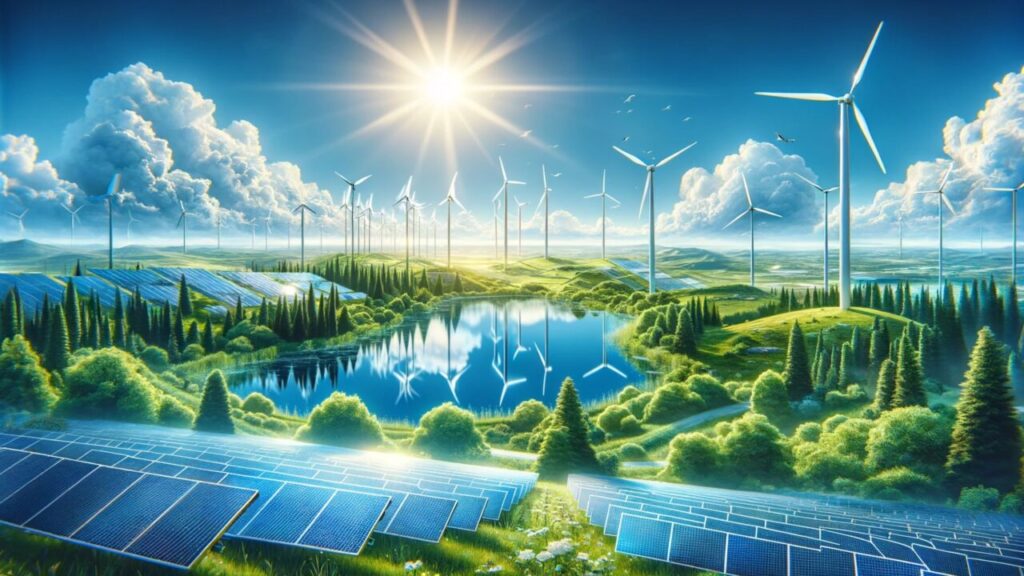by: Dr. Muhammad Nawaz Iqbal


Significant technological advancements in wind power have been made, especially in the efficiency and design of wind turbines. Thanks to materials, control systems, and aerodynamic advancements, modern wind turbines can now spin faster and at higher sizes. The enlargement of turbines, with larger blades and taller towers, is a significant development in these developments. At higher elevations, where wind speeds are often stronger and more steady, larger turbines can capture more wind energy. Advances have significantly influenced the development of wind turbine technology in aerodynamics. Aerodynamic profiles that maximize energy capture and curved blades are only two examples of the more advanced features added to rotor designs. Modern wind turbine efficiency rises as a result of improved aerodynamics, which decreases turbulence and improves the conversion of wind energy into rotational motion. Higher capacity factors, which result from these developments, allow wind turbines to produce a greater percentage of their potential output over time.
Lighter and harder materials for components of wind turbines have been developed thanks in part to materials science. Turbine blade weight has been decreased without sacrificing structural integrity because to the usage of modern materials like carbon fiber and fiberglass. Large turbines may be installed in multiple locations more affordably and with less difficulty due to the lighter blades’ ease of assembly, installation, and transportation. In addition, these materials’ resilience guarantees wind turbines a longer working life, which adds to wind energy’s overall sustainability. Modern wind turbines are now completely built with sensors and control systems to allow for grid interconnection and optimal performance. To optimize energy extraction and react to shifting wind conditions, sophisticated control algorithms modify the rotor’s orientation and the pitch angle of the turbine blades. Real-time data on the efficiency of turbines is also made possible by sensors and monitoring systems, which raises the total dependability of wind farms and enables predictive maintenance. The operability and efficiency of wind turbines are improved by these intelligent technologies.
A key area of advancement for wind power harvesting is offshore wind technology development. The steady and powerful winds generated over open waters are used by offshore wind farms. Increased offshore wind development potential has resulted from technological advancements in foundation and floating platform designs that allow wind turbines to be installed in deeper waters. Land use restrictions related to onshore projects are lessened by offshore wind projects, which also help to diversify the sources of wind energy. Grid reliability is improved and wind energy’s intermittent nature is addressed by the integration of wind turbines with energy storage devices. Wind farms can store excess electricity while high wind periods and release it during low wind periods thanks to energy storage technology like batteries. Because of this integration, the power supply is more dispatchable and reliable, which increases the amount of wind energy that can be used to balance the grid and meet peak demand.
Wind power is now more competitive due to lower costs and more efficient and simplified turbine production processes. The production of wind turbines has benefited from economies of scale thanks to developments in supply chain optimization, automated manufacturing, and precision engineering. As a result, wind energy is becoming more and more cost-competitive with traditional methods of generating electricity, which is propelling wind power’s global acceptance. This is measured in terms of the levelized cost of electricity. Repowering wind turbines refers to the process of updating or swapping out existing turbines for newer, more effective units. Repowering projects take advantage of the most recent breakthroughs in technology to improve the performance of already-existing wind farms. This method maximizes energy output while extending the lifespan of wind projects, which makes repowering an economically feasible option for maximizing the performance of aged fleets of wind turbines.
Concerns about the wind turbines’ acoustic impact have been addressed by noise reduction technology. Aerodynamic noise from wind turbines is reduced by innovations such blades with serrated trailing edges and better tower architectural designs. Developments in noise reduction technology facilitate the better cohabitation of wind farms with neighboring communities, which leads to less harm to the environment wind projects. In wind turbine design, monitoring, and optimization, digital twin technology has proven to be an effective instrument. Real-time simulations and performance analysis are made possible by digital twins, which are virtual versions of actual wind turbines. With the use of this technology, wind turbine dependability and efficiency are increased overall. It also makes scheduled servicing, efficiency improvements, and performance predictions easier.
The development of wind power technology has been fueled by advancements in wind turbine technology. These developments have improved the overall performance, economic viability, and long-term viability of wind power. They range from bigger and more effective turbines to breakthroughs in aerodynamics, components, automation, and smart technologies. Further advancements will probably be brought about by ongoing research and development activities as the wind power sector keeps evolving, which will support wind power’s continued expansion and integration into the world’s energy system.
